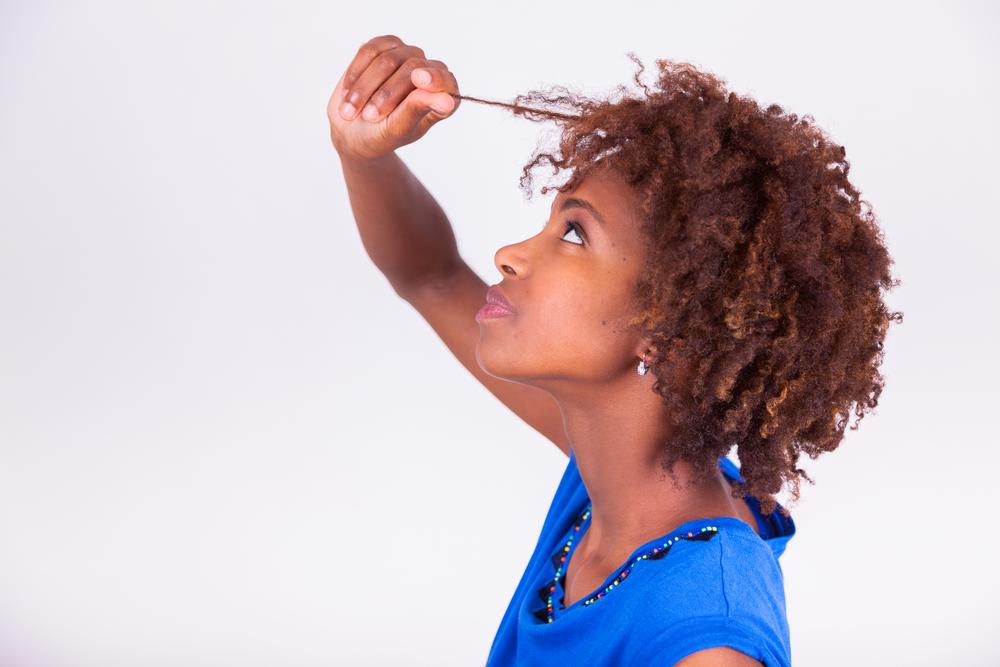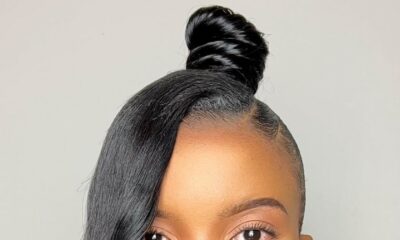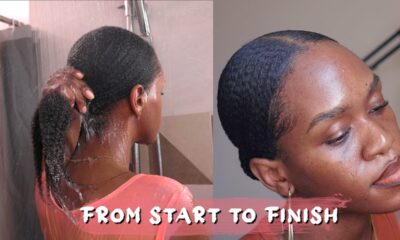Beauty
Nicole Ezeh: Aloe Vera Dries Out Your Low Porosity Hair & Here’s Why
Aloe vera is ‘supposed’ to dry out all low porosity hair types, considering the nature of low porosity hair and corresponding properties of the said plant. However, it is important to note that this is in no way meant to be a laid down rule or phenomenon that happens to every single person – everyone is different. A few explanations before we go on will help a first-time reader to relate better with the article and topic in general.
Low Porosity Hair
This hair type is generally identified with one feature: tightly-bound cuticles. The cuticles are like the ‘doors’ or ventilation system of the hair strands. Each hair strand possesses a lot of these ‘inlets’. The cuticles’ reactions are subject to the acidity/alkalinity levels and temperature changes obtainable in the hair environment at a particular time. For instance, the temperature change from low (cold) to high (hot) condition means cuticle change from a closed state to an opened state.
Let me give you a quick science lesson: On a standard pH scale, the values 1-6 depict acidity while the values 8-14 depict alkalinity. There is, however, a mid-point – the value 7; this is the balance. An acidic environment in the hair means closed cuticles, whereas an alkaline environment leaves the cuticles open.
Low porosity hair has a general pH value of 4.5-5.5; it is an acidic environment. This invariably means closed cuticles at all times. However, temperature alterations can be used to shift this seemingly constant acidic condition to a more favourable state where the cuticles get lifted enough to allow products in. As stated above, high temperatures can lift the cuticles. This is why warm water/products moisturize low porosity hair more than cold or room temperature water and products.
Another feature of this hair type is that the cuticles never get completely lifted. Instead, they get slightly lifted. This is why light products are best for low porosity hair types, this is to avoid clogging the slightly lifted cuticles with heavy products.
Aloe Vera
This is a plant known to grow in almost all climates. It is a resilient plant that needs little or no maintenance/care to flourish. It is a plant used generally for health purposes. It has so many medicinal properties, so it comes as no surprise that it is called the ‘wonder-plant’. It has also proved to be of great efficacy in hair growth and maintenance. The predominantly used component of this plant for hair maintenance is the gooey, extremely bitter (sometimes yucky) middle also known as aloe vera gel.
There is also a product known as aloe vera juice, although I don’t fully understand its manufacturing process. Application of aloe vera gel to the hair is a great means for trapping moisture in the hair. It is not a moisturizer, it just helps in moisture retention for a longer period of time.
Reasons Why Aloe Vera Dries Out Low Porosity Hair
The two sub-topics that the explanations for this development will be based on are:
– pH value (acidity)
– Protein sensitivity
pH Value
Aloe vera has a pH scale of 6, which is a slightly acidic value. Low porosity hair has cuticles that are always lowered and can only be lifted by warm moist heat and alkaline products. Aloe vera’s acidity shuts the cuticles and prevents them from receiving moisture. Instead of nourishment, the hair gets dried out because every other thing added after aloe vera application stays on the surface of the hair strands. This simply means that when the acidic aloe vera meets an already acidic hair environment, you get dryness as opposed to nourishment.
Protein Sensitivity
Research has shown that aloe vera gel contains a compound similar to keratin (hair protein) in structure. This protein-like compound in the aloe vera gel when applied meets cuticles that are already healthy.
It leaves low porosity hair brittle because the compound similar to keratin contained in aloe vera is too bulky for the cuticles to absorb. The cuticles can only absorb hydrolyzed keratin i.e. keratin degraded to smaller amino acids. Protein treatments are carried out as a means of strengthening limp cuticles. Low porosity hair doesn’t require heavy protein treatments because it already has compact cuticles.
So, the long and short of it is that aloe vera dries out low porosity hair and leaves it brittle because:
1. It is acidic
2. It contains a protein-like compound too heavy to penetrate low porosity hair cuticles.
However, I will reiterate that this is not applicable to all low porosity hair types. Rules/norms get breached daily and so it is in this scenario. Just as coconut oil nourishes naturalista A’s hair, the same way does it leave my hair as dry as hay. If aloe vera has not nourished your hair despite the raving reviews it receives from a lot of users, I hope this helped you understand and know the science behind why. Yours truly had aloe vera transported from Port-Harcourt to Lagos before discovering it was a drying agent for my hair. So, darling, your situation is very understood.
Thank you for reading. See you in the next article. Peace and blessings.






















